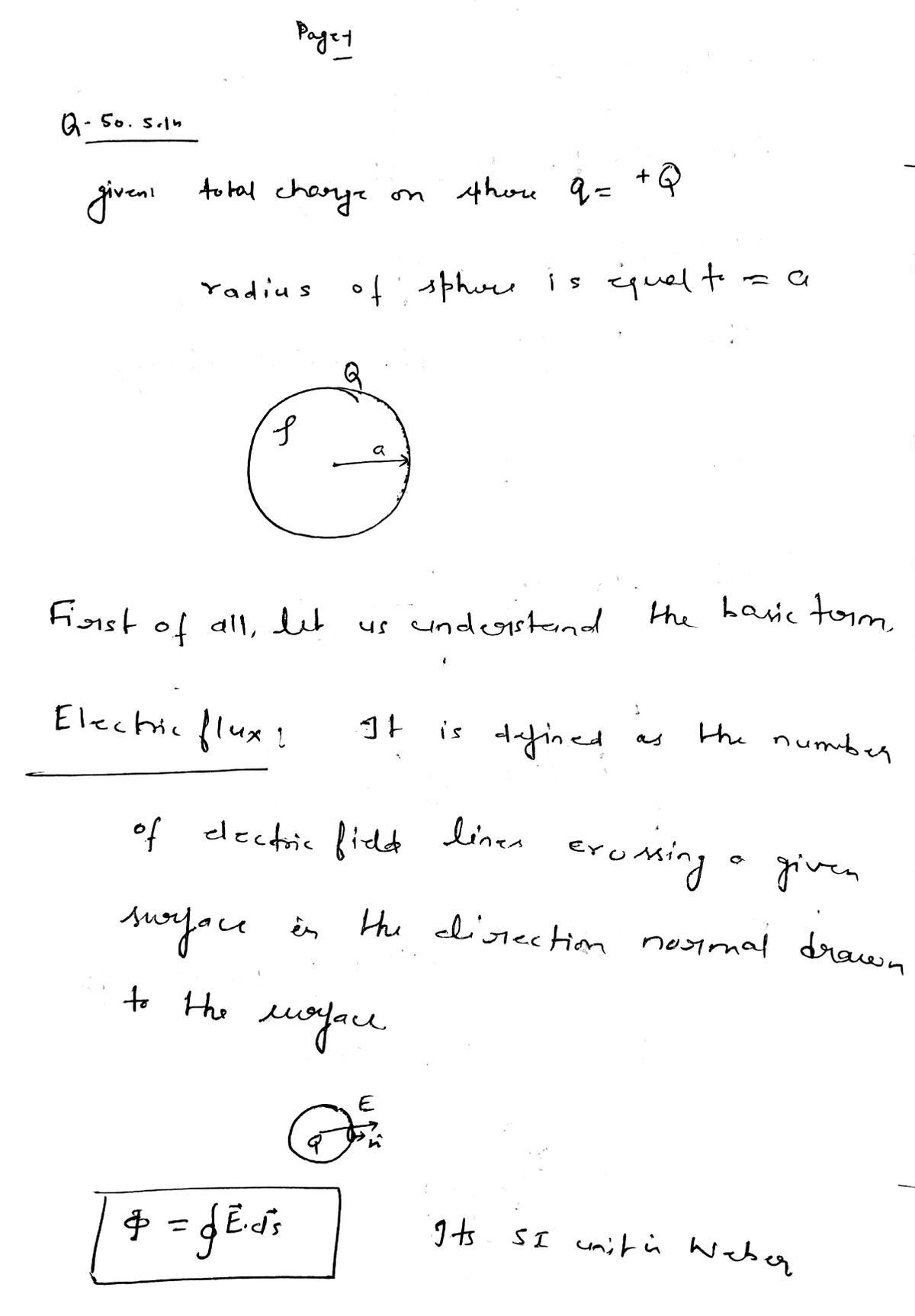50. S An insulating solid sphere of radius a has a uniform vol- ume charge density and carries a total positive charge Q. A spherical gaussian surface of radius r, which shares a com- mon center with the insulating sphere, is inflated starting from r= 0. (a) Find an expression for the electric flux ing through the surface of the gaussian sphere as a function of rfor r< a. (b) Find an expression for the electric flux for r> a. (c) Plot the flux versus r. pass-
50. S An insulating solid sphere of radius a has a uniform vol- ume charge density and carries a total positive charge Q. A spherical gaussian surface of radius r, which shares a com- mon center with the insulating sphere, is inflated starting from r= 0. (a) Find an expression for the electric flux ing through the surface of the gaussian sphere as a function of rfor r< a. (b) Find an expression for the electric flux for r> a. (c) Plot the flux versus r. pass-
Related questions
Question
For #50 in the pic, I would appreciate an explanation of the plot for the flux vs. r if someone is able to help me understand it. Thank you!

Transcribed Image Text:92 protons, can divide into two smaller spheres, each having 46
protons and a radius of 5.90 X 10-15 m. What is the magnitude
of the repulsive electric force pushing the two spheres apart?
|48. S Consider a long, cylindrical charge distribution of ra-
dius R with a uniform charge density p. Find the electric
field at distance r from the axis, where r< R.
49. A 10.0-g piece of Styrofoam carries a net charge of –0.700 µC
and is suspended in equilibrium above the center of a large,
horizontal sheet of plastic that has a uniform charge density on
its surface. What is the charge per unit area on the plastic sheet?
orpe
-r
50. S An insulating solid sphere of radius a has a uniform vol-
ume charge density and carries a total positive charge Q. A
spherical gaussian surface of radius r, which shares a com-
mon center with the insulating sphere, is inflated starting
from r= 0. (a) Find an expression for the electric flux pass-
ing through the surface of the gaussian sphere as a function
of r for r< a. (b) Find an expression for the electric flux for
е
e
e-
r> a. (c) Plot the flux versus r.
51. MA large, flat, horizontal sheet of charge has a charge per
unit area of 9.00 µC/m². Find the electric field just above
the middle of the sheet.
52. WA cylindrical shell of radius 7.00 cm and length 2.40 m
has its charge uniformly distributed on its curved surface.
The magnitude of the electric field at a point 19.0 cm radi-
ally outward from its axis (measured from the midpoint of
the shell) is 36.0 kN/C. Find (a) the net charge on the shell
and (b) the electric field at a point 4.00 cm from the axis,
measured radially outward from the midpoint of the shell.
53. M Consider a thin, spherical shell of radius 14.0 cm with a
total charge of 32.0 µC distributed uniformly on its surface.
Find the electric field (a) 10.0 cm and (b) 20.0 cm from the
es
Expert Solution
Step 1

Trending now
This is a popular solution!
Step by step
Solved in 5 steps with 5 images
